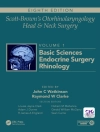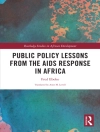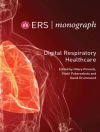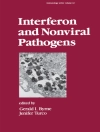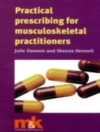This book presents the evidence related to the use of injectable biologics to provide faster and better healing for musculoskeletal lesions and conditions. The authors discuss approaches, such as blood derivatives and cell concentrates, applied to lesions of muscles, ligaments, tendons, bones, meniscus and cartilage, as well as osteoarthritis. Chapters are written by some of the most influential opinion leaders in the field, with up-to-date review of the current literature, where the authors explore both the potential and the limitations of these minimally invasive and promising treatments.
The first section is devoted to the formulations and rationale for the use of injectable orthobiologics, while the second section reviews current treatment methods applied to specific joints and pathologies – ranging from tendinopathies through non-unions to articular degenerative processes – as well as the results of these treatment approaches. The third section explores future perspectives, such as pluripotent stem cells, gene therapy, and the stimulation of intrinsic stromal cell niches.
Appealing to a broad readership, this book will be of interest to both laboratory research scientists and clinicians, including orthopedists, sports physicians, physiatrists, and regenerative medicine experts.
สารบัญ
I. Injectable Ortho Biologics: Formulations and Rationale 1. Bone marrow-derived cultured stromal cells and Bone Marrow Concentrate.- 2. Adipose-derived cultured stromal cells and Stromal Vascular Fraction from adipose tissue.- 3. Synovial-derived cultured stromal cells.- 4. Amniotic, Placenta, and Umbilical cord-derived cultured stromal cells.- 5. Allogeneic cells: pros and cons.- 6. Steroid hormones.- 7. Cytokines, chemokines, alpha-2-macroglobulin, growth factors.- 8. Platelet-rich plasma: leucocyte-rich, leukocyte-poor, autologous conditioned serum, autologous protein solution.- 9. Amniotic tissue extract, placenta tissue extract.- 10. Extracellular vesicles (exosomes).- II. Injectable Ortho Biolologics: evaluation methods and results based on pathology and anatomy.- 11. Rotator cuff tendinopathy: cell therapy.- 12. Rotator cuff tendinopathy: biologics.- 13. Tennis elbow: cell therapy.- 14. Tennis elbow: cell therapy biologics.- 15. Patellar tendinopathy: cell therapy.- 16. Patellar tendinopathy: biologics.- 17. Achilles tendinopathy: cell therapy.- 18. Achilles tendinopathy: biologics.- 19. Plantar Fasciitis: cell therapy.- 20. Plantar Fasciitis: biologics.- 21. Ligament lesions: cell therapy.- 22. Ligament lesions: biologics.- 23. Meniscal lesions: cell therapy.- 24. Meniscal lesions: biologics.- 25. Muscle lesions: cell therapy.- 26. Muscle lesions: biologics.- 27. Fractures (incl. Nonunions): cell therapy.- 28. Fractures (incl. Nonunions): biologics.- 29. Cartilage lesions and Osteoarthritis of the knee: cell therapy.- 30. Cartilage lesions and Osteoarthritis of the knee: biologics.- 31. Cartilage lesions and Osteoarthritis of the hip and ankle: cell therapy.- 32. Cartilage lesions and Osteoarthritis of the hip and ankle: biologics.- III. Future directions 33. Pluripotent stem cells: Embryonic/Fetal stem cells and induced pluripotent stem (i PS) cells.- 34. Gene therapy.- 35.Stimulation of the intrinsic stromal cell niche.- 36 Conclusions.
เกี่ยวกับผู้แต่ง
Giuseppe Filardo, MD, Ph D, is a Professor at the Faculty of Biomedical Sciences, USI, Head of Clinical Research at the Ospedale Regionale of Lugano, Switzerland, and the Senior Research Advisor at the Rizzoli Orthopedic Institute for the Applied and Translational Research Center, Bologna, Italy. He is one of the most prolific authors in the orthobiologic field with over 400 publications. His research activities focus on the study of orthobiologics for the musculoskeletal system, particularly the development of minimally invasive treatments and the identification of the potential, limits, and indications of the emerging regenerative approaches.
Bert R. Mandelbaum is double board certified in orthopedic surgery and orthopedic sports medicine. He received his MD degree from Washington University in St. Louis, then completed his residency at Johns Hopkins Hospital. He is widely recognized as one of the world’s foremost experts in soccer injury. He has served as a head team physician on the men’s and women’s teams for multiple World Cups and Olympic Games.
George Muschler is an expert in reconstructive surgery for arthritis, failed joint replacements, treatment of fractures and limb deformities, and musculoskeletal oncology. He is recognized internationally as a leader in stem cell biology, tissue engineering and regenerative medicine. He has lead a series of inter-disciplinary and inter-institutional programs, as well as committees in the Orthopaedic Research Society, international Society for Cell and Gene Therapy, and the American Academy of Orthopaedeic Surgeons.
Scott Rodeo is a clinician-scientist at the Hospital for Special Surgery (HSS), with appointments in the Department of Orthopedics and the Research Department. He is a Professor of Orthopedic Surgery at Weill Cornell Medical College and Co-Chief Emeritus of the Sports Medicine Service at the Hospital for Special Surgery. He serves as Vice Chairof Orthopaedic Research and Director of the HSS Center for Regenerative Medicine. He specializes in sports medicine injuries of the knee, shoulder, ankle and elbow and performs arthritis surgery on the knee and shoulder, including joint replacement surgery. Rodeo serves as Head Team Physician for the New York Giants Football Team. .
Norimasa Nakamura is a Professor at the Institute for Medical Science in Sports at Osaka Health Science University and the Global Center for the Medical Engineering and Informatics at Osaka University. He is also an orthopedic surgeon at the Osaka University Hospital, specializing in arthroscopic surgery and sports medicine. His research focuses on joint-tissue repair, particularly the regeneration of cartilage, ligament, and meniscus.


